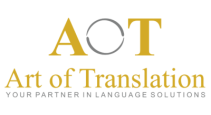It’s 2 pm Friday afternoon. The project manager just sent you a manual needing to be translated into Spanish by Monday. FedEx is scheduled to pick up the printed manual at 1pm. Client needs it for a meeting.
You don’t have much time, and you’re clocking out in 3 hours. What to do? You need to figure out something out quickly. Mondays are so busy! And now you must squeeze in a translation and find time to get the manual printed!
That is when you are tempted to take a quick shortcut… why not use one of these free online translation tools and ask your Spanish colleague to go over it…
But you have doubts… Will it be good enough? Why are those tools free?
Have you been there?
Shall we clarify and breakdown a few things?

What is a Free Online Translation Tool?
A free online translation tool is based on the principle of automated machine translation. You can find 3 major types:
- Ruled based machine translation: this method uses grammar and language rules
- Statistical machine translation: with this method, the machine learns to translate by analyzing a large volume of human translations
- Neural machine translation: this method is becoming the most popular and uses a large neural network.
They are accessible for free to anyone on the Web and offer a wide variety of language pairs.
How Does it Work?
Rules-based machine translation was the first type of method developed to automate translation. It would translate text word by word using grammatical rules and the relevant language pair dictionary. This method was not providing outstanding results (well, how many definitions could you give to the term “nice”?). Today, the most popular online translation tools no longer use this method. But it paved the way to the next generation.
Statistical machine translation represented a big step forward in the world of machine translation. Using statistical models as basis, translation is generated by analyzing existing human translations and applying prediction algorithms/probability rules to determine how to translate a text in a situation. Despite the improvement, the statistical rules can’t find the needles. You always have cultural nuances!
Neural machine translation learned the lesson from its older sister. This system uses an artificial neural network that is learning by comparing texts from broad sources simultaneously to gather as much context as possible. Then, it predicts the likelihood of a sequence of words with sophisticated algorithms. Plus, it models the dependencies between words learned from scanning the databases and the Web.
The neural machine translation is clearly the most used method nowadays, and the system adopted by popular online translation tools, such as Google Translate or DeepL.
What about Google Translate?
Google Translate is probably the most famous free online translation tool… maybe the one you’re tempted to use for the manual from your project manager.
Google Translate enables its users to translate written text, from words to website pages, from one language into the other in a few seconds. 133 languages are supported and 103 are currently in development.
Launched in 2006, it was using the statistical method until 2016. After that, it adopted the neural machine translation system. Today, it said that it translates over 100 billion of words daily.
Fun fact: Google Translate doesn’t work directly from one language to the other. It does first translate from the source language into English, and then from English into the target language. So, if you want to translate from Spanish into French, it will first translate Spanish into English, and then English into French.
Why? Because of the volume of documents available in English across the Web. You probably understand better now some famous #GoogleTranslateFails you’ve seen.
Google Translate in Action
We all know that pigs can fly in English! Yet, if you use Google Translate to say this idiom in Spanish, this is what you get:

Hum, your Spanish colleague may think that you’re feeling under the weather if you tell them that pigs are flying. Google Translate apparently provided a very literal translation.

A quick check in the dictionary, and you’ll find out that in Spanish they say: “Cuando las ranas críen pelo”. Let see what Google Translate tells us:

Well, well, well! Do frogs grow hair in English? Maybe! However, you may have some communications issues with your Spanish colleague!
And imagine – in French, when pigs can fly, they say that chicken will have teeth! No wonder why Google Translate gets lost in translation between the pigs, the frogs, and the chicken!
Is It Really Free for You?
You have now a better idea of what a free online translation tool is and how it works. Are you still tempted to use Google Translate for the Spanish version of the manual?
*Even with the new technology and techniques developed in the translation industry, bugs can still happen with machine translation and machine learning. The example above shows that it may never replace humans due to the complexity of the spoken language and the cultural differences in the language usage. Yet, it can still help you to translate a few sentences here and there.
*Attractive shortcut on a Friday afternoon, right? Back translations are not a guaranteed way of checking that the translation is accurate. You may have to chase a connoisseur of Spanish and of the product you’re shipping to verify the accuracy of the manual’s translation provided by Google Translate. The time saved is already lost.
*Plus, free online translation tools are not insured. It means that if it does not translate properly the step-by-step process to assemble the product you’re shipping, the employees of your client may do a wrong manipulation that can physically harm them. Then, your company will be fully liable.
*Also, note that these tools are machine learning systems, so it means they will save what you translate. Any confidential information or know-how will no longer be a trade secret. Google Translate doesn’t sign any NDA, nor are they liable for accuracy.
It may even cost you more…
*Finally, free online translation tools don’t seem to have any sense of humor or emotions (for example, they don’t get the pigs flying in the sky). How could they find the best words to convey your message in your target language? If you don’t reach your audience, how can you turn prospects into customers? If your client doesn’t understand your manual because of a mistranslated word, would they buy from you next time?
An online translation tool can indeed cost a lot when you start to break everything down. But don’t worry! We have a solution…

AOT, The Solution for Your Manual Translation
AOT is a boutique translation agency committed to its clients’ success. As your partner, they’ll take off your shoulder the translation of the manual, so you can enjoy your weekend.
The right qualified human translator will use their expertise to deliver a quality manual of your product and offer you a revision process. So, you can ship on Monday a concise, accurate and clean translated manual with the proper business terminology.
AOT is fully insured and NDA. We are a Women Owned Business and a member of the American Translators Association too.
Hiring AOT is the real shortcut for you to enjoy your weekend with peace of mind. Contact us at pm@aot.global.
References
https://www.gala-global.org/knowledge-center/about-the-industry/language-technology
https://en.wikipedia.org/wiki/Google_Translate
https://weglot.com/blog/machine-translation-software/
https://www.listenandlearnusa.com/blog/9-spanish-idioms-express-to-impress/
https://ttcwetranslate.com/how-does-google-translate-work/
https://www.languageinsight.com/blog/2019/google-translate-avoid-using-it
